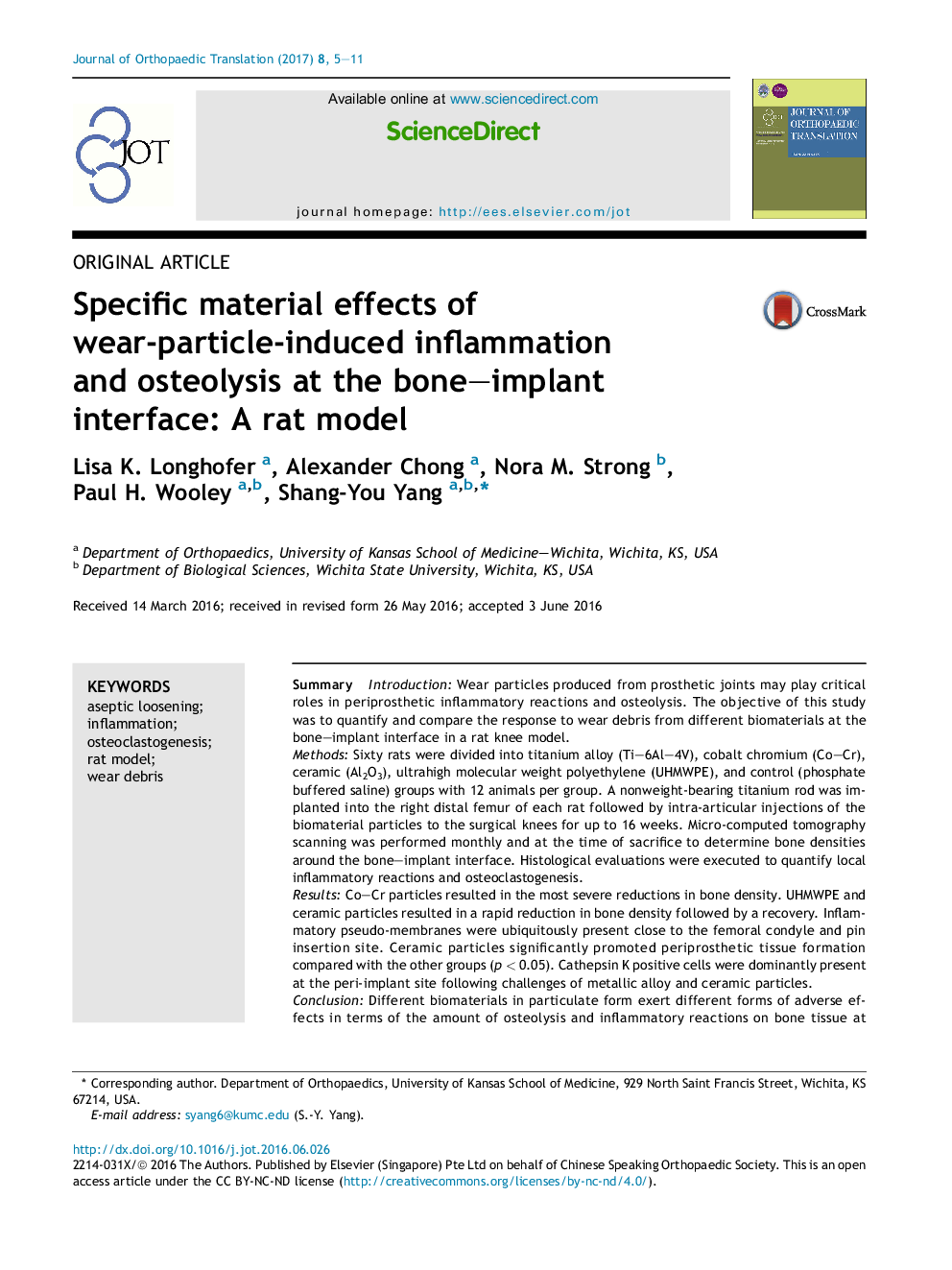| کد مقاله | کد نشریه | سال انتشار | مقاله انگلیسی | نسخه تمام متن |
|---|---|---|---|---|
| 2739762 | 1567070 | 2017 | 7 صفحه PDF | دانلود رایگان |
SummaryIntroductionWear particles produced from prosthetic joints may play critical roles in periprosthetic inflammatory reactions and osteolysis. The objective of this study was to quantify and compare the response to wear debris from different biomaterials at the bone–implant interface in a rat knee model.MethodsSixty rats were divided into titanium alloy (Ti–6Al–4V), cobalt chromium (Co–Cr), ceramic (Al2O3), ultrahigh molecular weight polyethylene (UHMWPE), and control (phosphate buffered saline) groups with 12 animals per group. A nonweight-bearing titanium rod was implanted into the right distal femur of each rat followed by intra-articular injections of the biomaterial particles to the surgical knees for up to 16 weeks. Micro-computed tomography scanning was performed monthly and at the time of sacrifice to determine bone densities around the bone–implant interface. Histological evaluations were executed to quantify local inflammatory reactions and osteoclastogenesis.ResultsCo–Cr particles resulted in the most severe reductions in bone density. UHMWPE and ceramic particles resulted in a rapid reduction in bone density followed by a recovery. Inflammatory pseudo-membranes were ubiquitously present close to the femoral condyle and pin insertion site. Ceramic particles significantly promoted periprosthetic tissue formation compared with the other groups (p < 0.05). Cathepsin K positive cells were dominantly present at the peri-implant site following challenges of metallic alloy and ceramic particles.ConclusionDifferent biomaterials in particulate form exert different forms of adverse effects in terms of the amount of osteolysis and inflammatory reactions on bone tissue at the bone–implant interface. It provides information for engineering more appropriate materials for arthroplasty components.
Journal: Journal of Orthopaedic Translation - Volume 8, January 2017, Pages 5–11
